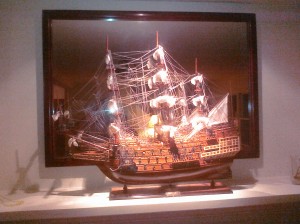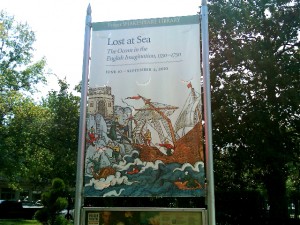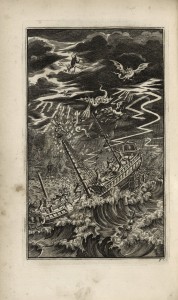One of my favorite Christmas gifts this year was a copy of John Hattendorf’s new edition of Lawrence Wroth’s The Way of a Ship, first published in 1937. It’s a wonderfully-written, smooth and generous outline of the history of navigation in the West. Its old-fashioned and in spots probably out of date — but it’s a great introduction and review of material that’s close to my heart. If I’d had it when I was putting Lost at Sea together, it might have saved me some time.
But no matter what national preferences may have been between cross staff and astrolabe, English and Latins alike were agreed that the astrolabe was, to meet certain conditions, an essential part of the ship’s equipment. In its use it was not necessary, except in hazy weather, to gaze directly upon the sun; it was held by its ring upon the thumb and its revolving arm was manipulated until a beam of the sun passed through the slits in the vanes at either end of the arm. There remained but to read the figure on the scale, found in the outer edge of the instrument. (39)

![[Spieghel der Zeevaerdt. English] The mariners mirrour ...](http://stevementz.com/wp-content/uploads/2010/09/Mariners-Mirror-222x300.jpg)

